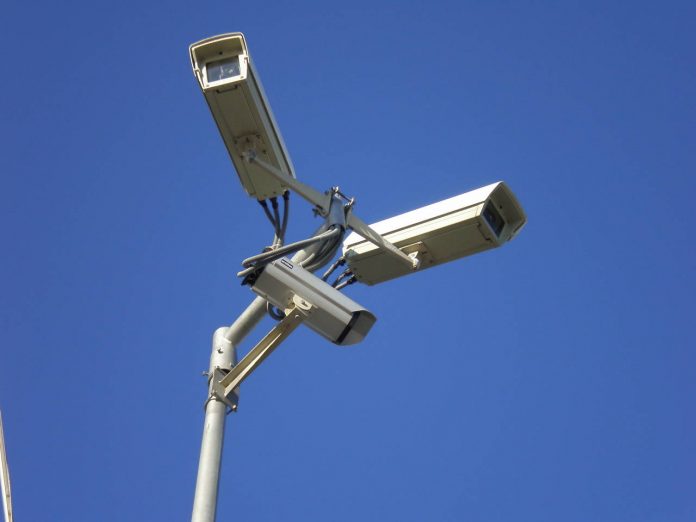This article is written by Pranav Sethi, from SVKM NMIMS School of law, Navi Mumbai. This article analyzes the admissibility of CCTV recordings as evidence in courts.
Introduction
A CCTV system tracks the inside and outside of a building and sends the indications to a screen. If you’re worried about the safety of your workspace, CCTV installations in India will assist you in protecting your property from anywhere at any time. CCTV services are also being used as an extra weapon in the war against crime in several countries around the world. This blog post will show you how CCTV video is crucial in criminal investigations.
We will attempt to explain the significance of identifying the charged individual in light of Section 9 of the Indian Evidence Act, 1872 (subsequently referred to as “IEA”). In situations where there is no one to determine the identification of the convicted person, the performance of the offence may be proven by circumstantial evidence. CCTV footage is one example of such evidence. Secondly, this article examines the nature of CCTV footage using different case laws and asks if a lawsuit can be formed strictly on the grounds of a single element of CCTV footage. Finally, to prevent misunderstandings, here we will examine the procedure of electronic evidence admissibility in court in light of Section 65(b) of the IEA.
Existing Literature
Considering the contentious existence of CCTV, little has been understood about how it should be utilized or how successful it is at implementing many of its specified goals. CCTV has many possible uses for national security, and it has been used for a variety of purposes, including preventing crime, detecting crimes, enhancing emergency response, aiding in the governance of organizational spaces, and reducing capital fear of crime. CCTV may also be used for non-public security purposes, like tracking passenger activities and examining employee grievances.
Almost all research attention to date has focused on the use of CCTV to deter crime among these possible applications (Honovich 2008). CCTV was found to be successful in minimizing robberies in early studies by Mayhew et al. (1979) and Webb and Laycock (1992).
Though the assessment methods used had some drawbacks, London Underground stations were a success. Since then, the topic has gotten a lot of research attention, with mixed results. As a result, CCTV recordings are successful in minimizing fraud in many studies. Others have shown that it has little effect in car parks (Poyner and Webb 1987; Tilley 1993), has little or no impact on crime in suburban areas (Gill and Spriggs 2005).
How CCTV footage helps during the investigation
The ‘5WH’ inquiry model (Cook et al 2016) could be described as a series of issues: who has been involved in an incident, where does that begin, what unfolded, when did this occur, why does it take place, and how were some violations perpetrated.
Investigators will view the entire incident thanks to CCTV video. The video depicts the timeline of activities, the criminal’s tactics, and the perpetrator’s entrances and exit directions. Though this may not be possible for a variety of reasons, CCTV footage may be useful in disproving other types of evidence, such as witness testimony. The video can help investigators determine who’d been involved in the incident either directly, like when a suspect is identified, or indirectly, including when the criminal touches a material from which forensic evidence can be recovered. The recordings can still aid investigators in determining the criminal’s timeline. The CCTV video will be used by investigators to check the authenticity of both the suspects’ and witnesses’ claims.
Since CCTV video can lead to a perpetrator’s pleading guilty, it can help save money by preventing court trials. The video may be used to prove or disprove the suspect’s guilt or innocence. Investigators use video evidence as a source of material evidence for witness statements, and it aids in the search for the missing person or suspect.
Admissibility of E-evidence in criminal proceedings
Where every electronic evidence is being used as proof, Section 65(b) of the IEA requires that the substance of the electronic record be proven. The main objective of Section 65(b) is to protect supplementary evidence. In the case of Arjun Panditrao Khotkar vs Kailash Kushanrao Gorantyal, the Supreme Court reconsidered Section 65(b) of the IEA, resolving the conflicted status of Section 65(b) in The Indian Evidence Act, 1872
The Court reversed the decision in the case of Shafhi Mohammad vs State of Himachal Pradesh, holding that the certification needed under Section 65b (4) is a prerequisite to the permissibility of proof using testimony. According to a three-judge panel in the case of Anvar P.V. vs P.K. Basheer, an electronic document exists. The Lord’s Bench Arjun Panditrao’s recent judgment explained about the certificate under the Section. By stating, “If the final text is submitted even before Court for review, Section 64b (4) is not required for Examination, then the situation in terms of the certificate requirement has become transparent”.
In the case of CCTV, the image is captured by the sensors and transformed to digital by the DVR ( Digital Video Recorder). Since it stores data in electronic form, the DVR is an electronic record. If the DVR is presented to the Court, it will be considered the main evidence by Section 62 of the IEA unless the original document is presented to the Court for review, and the provisions of Section 65b (4) of the IEA will not apply. Nevertheless, if a huge proportion of devices are mounted and the data is collected, It is not necessary to put the whole set up just before Court because it is technically held on massive servers. The only other choice in this situation is to transfer the files from the massive server to a CD or USB and then present it to the Court. Since the USB and CD are not primary evidence, complying with Section 65b(4) is required.
The person in charge of the server must provide you with a certificate. The primary objective of the certificate is to ensure the proper workplace environment of the device from which the electronic record is generated well before the Court for review, such that it can be known that the material has not been interfered with by others or ill-treated as a result of a computer malfunction. The certificate has not been made a requirement to confirm the accuracy of the content of the computer-generated records.
Mandatory requirement
If the requirements in Section 65b(2) are met, any information found in an electronic record, which is printed on paper, stored, registered, or copied in optical or magnetic media created by a machine, is considered to have been a piece of information (under the Evidence Act) despite anything in the Evidence Act. If the requirements in Section 65b(2) are met, the material over which the information contained inside an electronic record is published, or the optical or magnetic media-generated either by software where such data is stored, recorded, or replicated, shall be admissible in any proceeding as proof of any nature of the initial or of any truth specified, despite evidence or production of the original.
When a claim in the proof is obtained under Section 65b, Section 65b(4) enables the creation of a certificate that, among other things, identifies the electronic copy containing the statement, explains how it was generated, and specifies the system used to make the electronic record to demonstrate that it was generated by a compliant system.
Development of judicial approach towards CCTV recordings and other E-evidence
State (NCT of Delhi) Vs Navjot Sandhu and Ors. is among the earliest notable Supreme Court cases in which the issue of electronic record processing as evidence emerged. There, a two-judge bench held that context secondary proof of an electronic record in Sections 63 and 65 of the Act is not barred, regardless of whether the conditions of Section 65b are met. Even when a certificate is not issued following Section 65b(4) of the Act, it was maintained that secondary proof may be provided throughout the conditions specified in Sections 63 and 65 of the Act.
In Anvar’s case, the court ruled that Sections 63 and 65 of the Act have no relevance throughout the case of secondary proof using electronic record and that Sections 65A and 65(b) of the Legislation control the situation entirely. The basic rule on secondary proof in Section 63 read with Section 65 of the Act shall lead to Section 65(b), which is a specific arrangement. The court noted the current legal situation in India, which is that the Evidence Act does not consider or authorize the proof of an electronic record by oral evidence if Section 65(b) of the Evidence Act is not followed.
Regardless, the law was proclaimed in Anvar’s case, in the case of Tomaso Bruno vs The State of U.P., a three-judge bench of the Supreme Court strayed from the agreed role. The court ruled that secondary proof of the details of a report may also be taken through Section 65 of the Act in a criminal trial where CCTV footage was required to be used. In its decision, the court did not refer to Section 65b(4) or the law established in the Anvar P.V. case. In reality, it referred to the Navjot Sandhu case, which was overturned in the Anvar P. V. case.
Following that, the Supreme Court has held in Shafhi Mohammad that the provision of a certificate under Sections 65b(4) may not always be obligatory and that the provision, as a functional matter, may be eased by the court if the cause of justice so warrants. The court explained that a party who wasn’t in control of the computer from which the document is created cannot be needed to issue a certificate under Section 65(b) for electronic evidence to be admissible. Procedures under Sections 63 and 65 of the Act will undoubtedly be included in this situation.
Important case laws
K. Ramajayam Vs Inspector of Police
In the case of K. Ramajayam Vs Inspector of Police; Dhanaram and Gunaram were brothers who owned and operated “Balaji Pawn Brokers,” a pawnbroking and jewelry shop. Around 8:00 a.m., the deceased Gunaram opened the store. Dhanaram arrived around 9:00 a.m. and stayed for a while before leaving for another job. He was surprised to see his brother lying in a pool of blood when he returned to the shop around midnight. He sounded the alarm, and nearby shop owners arrived. Aside from the homicide, 935 grams of gold were stolen. The plaintiffs’ counsel relied heavily on the Supreme Court ruling in PV Anvar Vs PV Basheer, which defined Sections 65A and 65(b) of the Indian Evidence Act, 1872. The Supreme Court decided that encrypted data on a CD which lacks a Section 65(b) certificate is invalid proof.
According to the prosecutor’s office, the Supreme Court claimed in the same situation as the applicant that when an electronic record is provided as direct information under Section 62, it is permissible in complying with the terms outlined in Section 65(b). In the current situation, vast institutions are involved.
The tribunal held that while Section 2(t) of the IT Act, 2000 does not explicitly define electronic evidence, the complete databases could be taken into courtrooms under such circumstances. Since the defendant was explicitly captured on camera when committing his crime in this case, the CCTV footage should be considered electronic proof.
The appellant/conviction suspect’s under Section 404 of the Indian Penal Code, 1860, as well as the penalty levied on him was overturned. The convictions of suspects were upheld under Sections 449, 392, and 302. The punishments levied for the offences under Sections 449 and 392 of the Indian Penal Code are also enforced. The death penalty levied for the violation of Section 302 is overturned. Instead, the accused/appellant is sentenced to life in jail. The convicted will be sentenced to a minimum of 25 years in prison, during which time he will not be eligible for any constitutional relief or plea agreement.
Anvar P.V. Vs. P.K. Basheer & Ors.
In this case, the Judicial Branch has resolved the problems surrounding the admissibility of electronic evidence that arose from numerous contradictory decisions and also the procedures adopted by various High Courts and Trial Courts. The Court has interpreted Sections 22A, 45A, 59, 65A, 65(b), and 65(c) of the Evidence Act, holding that secondary information on CDs, DVDs, and Pen Drives is not permissible without even a certificate under Section 65b (4) of the Evidence Act. It’s been established that electronic evidence obtained without even a certificate under Section 65(b) of the Evidence Act cannot be proven by oral evidence, and also that the expert advice obtained under Section 45A of the Evidence Act cannot be used to make this electronic evidence permissible.
The decision will have far-reaching consequences throughout all contexts where even the prosecutor depends on electronic evidence, especially in anti-corruption trials where audio-video recordings are transmitted to the court on CD/DVD. In all such places, where the CD/DVD is transmitted without the need for certification under Section 65(b) of the Evidence Act, the CD/DVD is inadmissible, and the Court cannot look into more expert opinion as to their authenticity, as the Supreme Court Judgment shows.
It was also noted that all of these precautions are taken to protect the origin and reliability, which are the dual key components of reliable source electronic documents that were hoped to be used as evidence. “Since electronic records are more vulnerable to modification, deletion, transposition, excision, and other forms of fraud, a trial based solely on electronic records may result in a miscarriage of justice”.
Conclusion
In today’s world, CCTV cameras are almost everywhere to keep crime at bay. CCTV video has been used by law enforcement authorities to solve crimes and arrest criminals on several occasions. The CCTV captures a truthful image of the events, and the Courts make a significant impact on its integrity as a result of its accuracy. After the IEA introduced Section 65(b), the Supreme Court has issued several judgments emphasizing the value of electronic evidence admissibility.
It can be used as sufficient proof if the surveillance video is reliable, the source of the recording is known, and it meets the requirements of Section 65(b) of the IEA. Based on certain characteristics of CCTV, a substantiated claim can be formed. Since eye witnesses’ statements could vary from one another and they have the propensity and potential to amend their statements, CCTV proof cannot be said to be equal to witness testimony. Nevertheless, sufficient quality CCTV footage reveals the real event of the incident, and certain documentation can be used to conclude the homicide and identify the suspect.
References
https://criminallawstudiesnluj.wordpress.com/2020/09/05/cctv-footage-a-silent-witness/
https://www.tandfonline.com/doi/abs/10.1080/13600869955044
https://link.springer.com/article/10.1007/s10610-017-9341-6
https://journalistsresource.org/politics-and-government/surveillance-cameras-and-crime/
https://onlinelibrary.wiley.com/doi/abs/10.1111/1745-9133.12419
https://www.sciencedirect.com/science/article/pii/S0198971516304240
https://www.tclindia.in/cctv-footages-are-material-piece-of-evidence/
https://www.foresight.expert/expert-witness-services/cctv-analysis-expert-witness
https://commons.allard.ubc.ca/fac_pubs/79/
- LawSikho has created a telegram group for exchanging legal knowledge, referrals, and various opportunities. You can click on this link and join:
 Serato DJ Crack 2025Serato DJ PRO Crack
Serato DJ Crack 2025Serato DJ PRO Crack











 Allow notifications
Allow notifications



